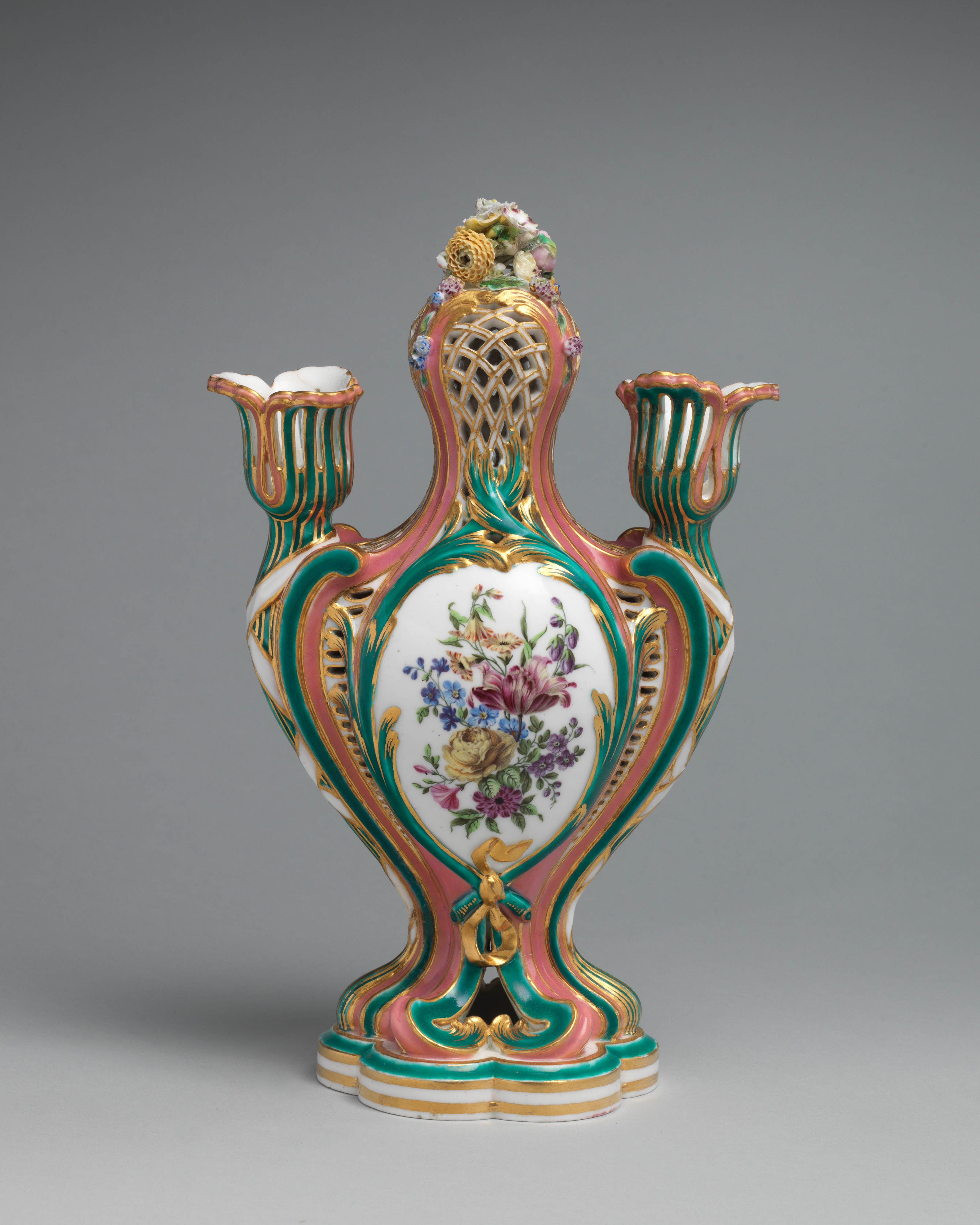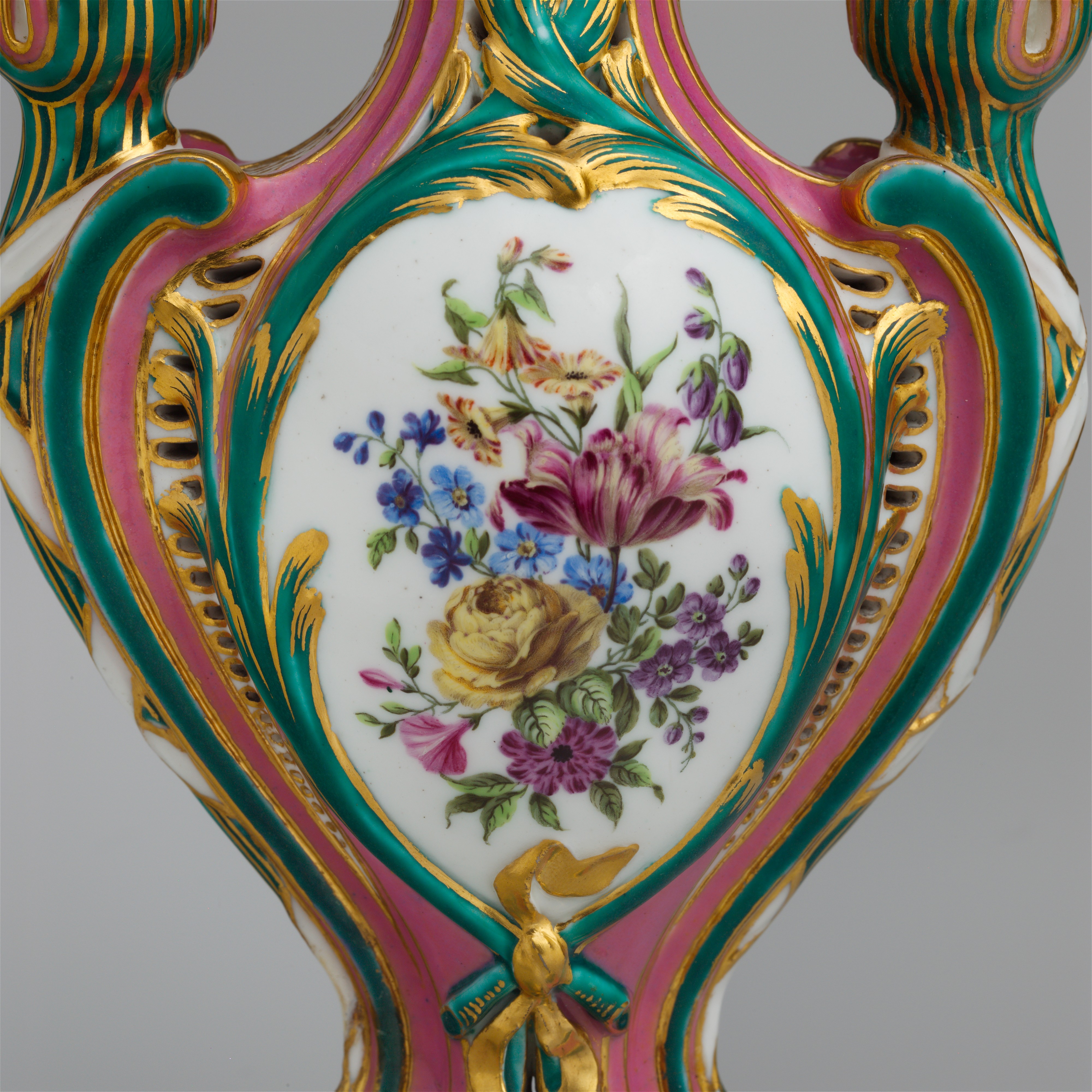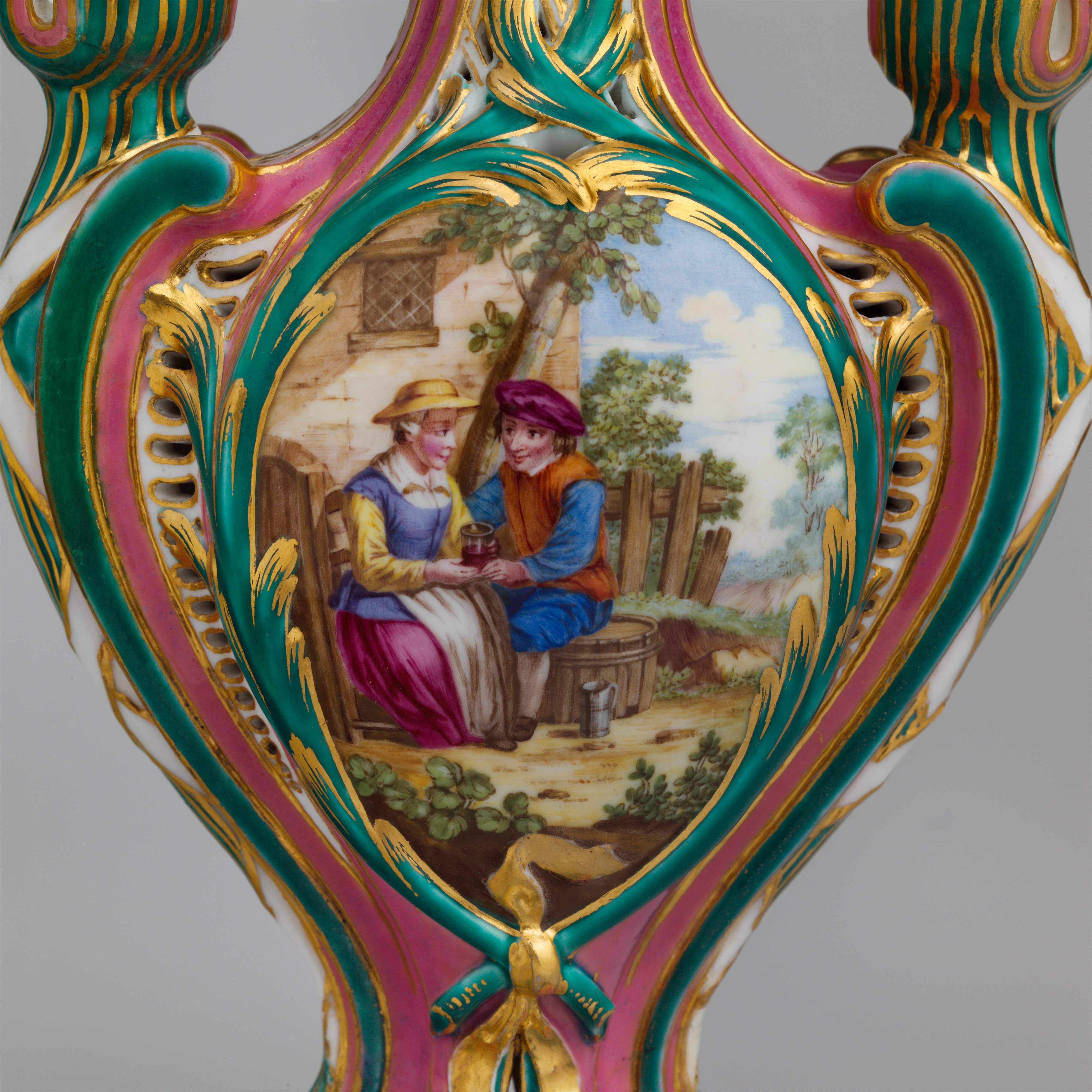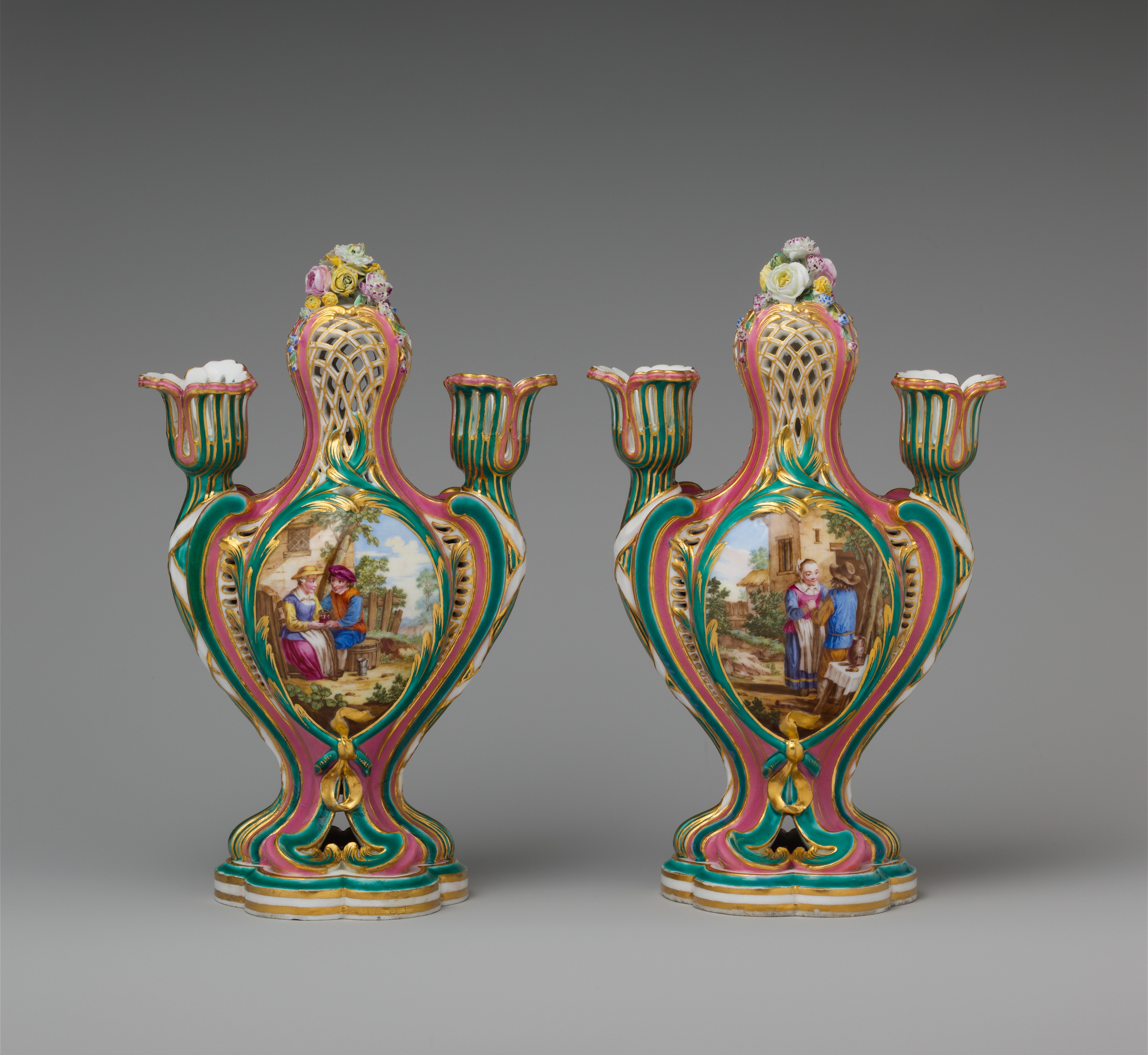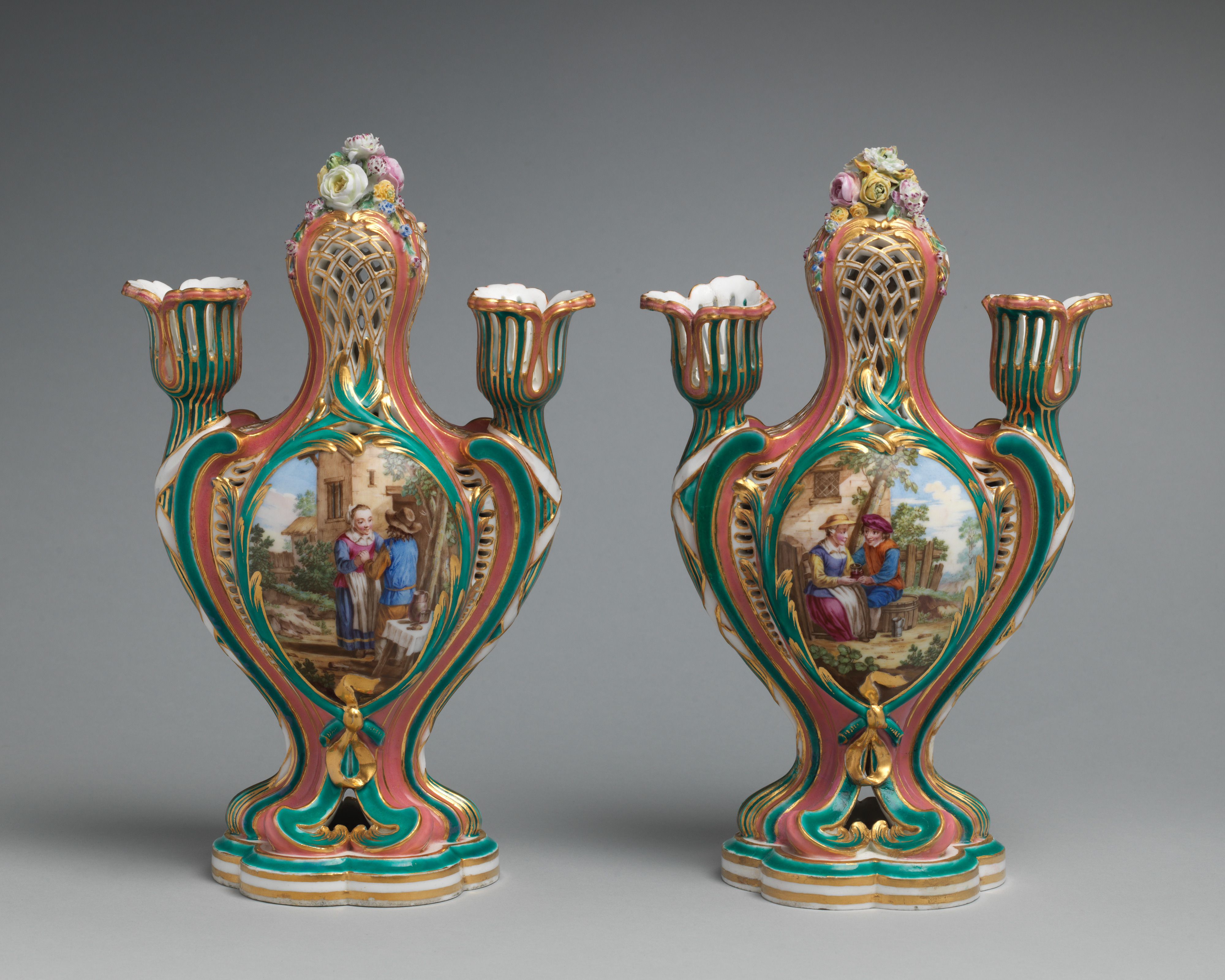Potpourri vase with candleholders (pot-pourri à bobêche) (one of a pair)
These potpourri vases with candleholders reflect the quest for innovation that characterizes so much of the Sèvres factory’s production of the 1760s. The vases could have been used as potpourris (the scent of petals inside could waft through the panels of pierced trelliswork at the top), and the two flanking candle sockets allowed them also to serve as candelabra, yet it seems probable that they were primarily intended for decoration. Both the unusual and complex form and the dual ground colors of pink and green made them completely unlike anything being produced elsewhere on the Continent or in Britain at this time.
As mentioned earlier, the English businessman Thomas Bentley disliked some of the models he saw at the Sèvres factory when he visited there in 1776, and he enlarged on the topic in his journal: “They have an immense number of ornamental vases, highly enriched with enamel and burnished gold; and amongst several hundreds there may be about half a dozen very elegant forms. All the rest are neither antique nor gothic, but barbarous beyond conception.” The design of the potpourri vases must have appealed to Louis XV, however, as he purchased four with pink and green grounds in December 1760.
Given the rarity of this model—approximately fifteen surviving examples with a variety of ground colors are known—it is probable that this pair was part of that purchase. The factory sales records indicate that the four potpourri vases acquired by the king were to join another model of vase to form a garniture.
Due to rights restrictions, this image cannot be enlarged, viewed at full screen, or downloaded.
This artwork is meant to be viewed from right to left. Scroll left to view more.


